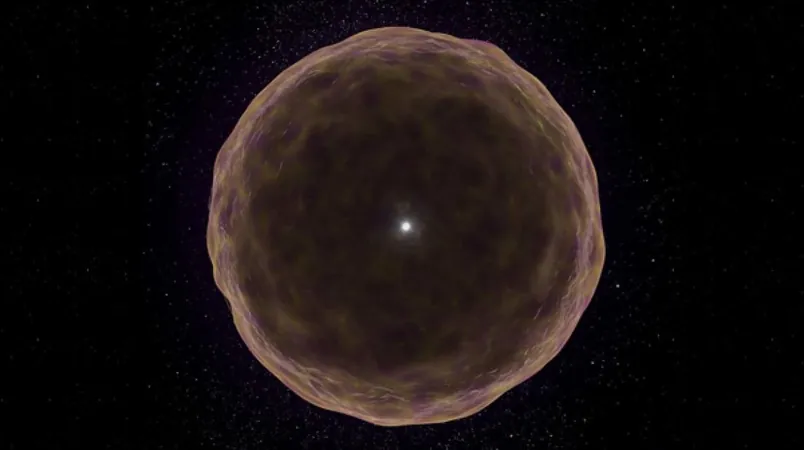
Revolutionary Supernova Discovery Unveils Secrets of Stellar Evolution!
2025-08-29
Author: Benjamin
The Cosmic Drama of Stars: From Hydrogen to Heavy Elements
Stars have a fascinating lifecycle, powered initially by the fusion of hydrogen into helium. This journey through various stages transforms massive stars into complex structures layered like an onion: a shell of hydrogen on the outside, with increasingly heavier elements such as helium, carbon, oxygen, neon, magnesium, and finally, silicon and sulfur nestled within.
Stripped Stars: Clues to Cosmic Element Creation
In the universe’s grand production line of elements, silicon and sulfur play crucial roles. When they fuse into iron, the core of the star collapses, leading to a spectacular supernova explosion or sometimes even the birth of a black hole. Stripped stars—those that have lost their outer hydrogen layer—offer valuable insight into this intricate process. These stars, with their internal layers of helium or carbon/oxygen exposed, provide tangible evidence of the stellar structure and its connection to element production.
A Groundbreaking Discovery: Supernova SN 2021yfj Revealed!
Enter Supernova SN 2021yfj, a recent discovery that has enthralled scientists. This remarkable supernova originates from a star that has been stripped down to its oxygen/silicon/sulfur-rich core. For the first time, astronomers directly observed a substantial shell composed of silicon and sulfur, ejected from the star just before it detonated in a supernova.
Unlocking the Mysteries of Stellar Evolution
Such an exposure of an inner layer of a star is a challenging theoretical concept and indicates an exceptionally rare mass-loss mechanism. This extraordinary supernova not only sheds light on advanced phases of stellar evolution but also hints at the formation of heavier elements—silicon, sulfur, and even argon—that were not previously detected on the surface of known massive stars.
What’s Next in Stellar Research?
The implications of this discovery are monumental as they enrich our understanding of how the universe produces the elements that make up everything around us. Scientists are now eager to explore how these findings can expand our knowledge of cosmic evolution.









 Brasil (PT)
Brasil (PT)
 Canada (EN)
Canada (EN)
 Chile (ES)
Chile (ES)
 Česko (CS)
Česko (CS)
 대한민국 (KO)
대한민국 (KO)
 España (ES)
España (ES)
 France (FR)
France (FR)
 Hong Kong (EN)
Hong Kong (EN)
 Italia (IT)
Italia (IT)
 日本 (JA)
日本 (JA)
 Magyarország (HU)
Magyarország (HU)
 Norge (NO)
Norge (NO)
 Polska (PL)
Polska (PL)
 Schweiz (DE)
Schweiz (DE)
 Singapore (EN)
Singapore (EN)
 Sverige (SV)
Sverige (SV)
 Suomi (FI)
Suomi (FI)
 Türkiye (TR)
Türkiye (TR)
 الإمارات العربية المتحدة (AR)
الإمارات العربية المتحدة (AR)